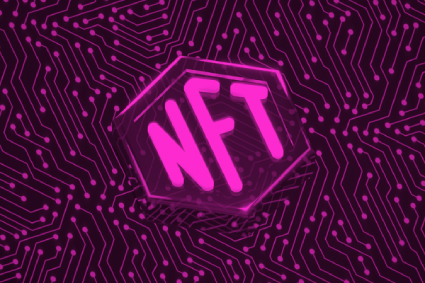A couple of years ago, if you put the letters NFT together, people would probably look at you like you messed up your acronyms. But say NFT now and people will likely pull out their phone to show you their latest collectible.

NFTs or non-fungible tokens are a kind of crypto token that are created or “minted” with unique properties. It’s the uniqueness of NFTs that make them valuable — and what opens up an entirely new way for people to interact online.
The emergence of NFTs enables people to create one-of-a-kind (and verifiable) digital objects. Use cases so far range from collectibles and art work to digital titles and the rights to physical objects (like a bottle of Hennessy) and deeds to houses.
The NFT trend has hit so hard that 2021 officially went down as the Year of the NFT, and Collins Dictionary made “NFT” the word of the year. And this year, 40% of respondents to the 2022 Crypto Literacy Survey knew what an NFT was.
Like the larger crypto market (and other more traditional global markets for that matter), the number of dollars invested in NFTs might be down from its latest peak in 2021. However, the results from this year’s Crypto Literary Survey did show that of the men who responded, more owned NFTs than cryptocurrencies (78% owned NFTs versus 72% owning crypto).
The idea of digital collectibles is resonating with people around the world. As utility and excitement around NFTs continues to grow, it will be interesting to see if non-fungible tokens become crypto’s killer app that help lead to more widespread adoption.
A brief history of NFTs from CryptoKitties to Bored Apes
In typical tech-trend fashion, it really felt like NFTs appeared overnight and then all of sudden everyone was talking about them.
In reality, NFTs matured over time and — similar to the rest of the crypto space — steadily moved from niche to mainstream as the underlying tech and use case became more defined.
The first NFT actually pre-dates the 2015 launch of the Ethereum network. Ethereum now accounts for the majority of NFT-related activity. But the first NFT was minted Namecoin (a fork of bitcoin) in 2014 and is a video clip made by a Namecoin developer.
The idea of non-fungible tokens was largely experimental for several years until a project known as CryptoKitties became a viral sensation in 2017.
CryptoKitties is an NFT-based game that allows people to buy, sell, collect, and breed cartoony- looking cats. CryptoKitties is significant in the evolution of NFTs because it was one of the first NFT projects that gained widespread attention, and helped inspire ERC-721 — the Ethereum token standard that makes each NFT unique.
By now, there are a number of the major blockchains by market capitalization that support the creation of NFTs, including:
- Solana
- Polygon
- Cardano
- Tezos
- and more…
Bored Apes Yacht Club is the latest popular iteration of NFTs. As of August 2022, there were over 10,000 Bored Ape NFTs. The most expensive BAYC NFT is Bored Ape #8817, which fetched $3.4 million.
Still early on the NFT adoption curve
As mentioned earlier, the popularity and use of NFTs is a widespread, global phenomenon:
- According to finder.com, 6.6 million Americans own NFTs, or about 3% of the population
- According to NFTclub.com, Taiwan, Australia, Canada, Iceland, and New Zealand lead the world in Google searches for information about NFTs.
- And, back to the finder.com stats, the countries with the highest rates of NFT ownership by percentage of population are India, Vietnam, Hong Kong, Singapore, and Brazil.
Based on data from the blockchain analytics firm, Chainalysis, NFTs are becoming a prominent gateway to decentralized finance. Based on a segment of study results looking at crypto adoption in Central and Southern Asia and Oceania (CSAO), there is a connection developing between NFTs, blockchain-based gaming, and general access to decentralized finance services and products.
From the Chainalysis report, “…web traffic patterns suggest NFTs are perhaps the biggest on-ramp into DeFi for CSAO today. 58 percent of DeFi-related web traffic from CSAO users in Q2 2022 was NFT related; another 21 percent was to the websites of play-to-earn blockchain games.”
Following the rise in popularity of NFTs, more crypto-related and infrastructure such as easy to use NFT marketplaces and wallet services are also growing in visibility, making crypto easier to access and use for all.



